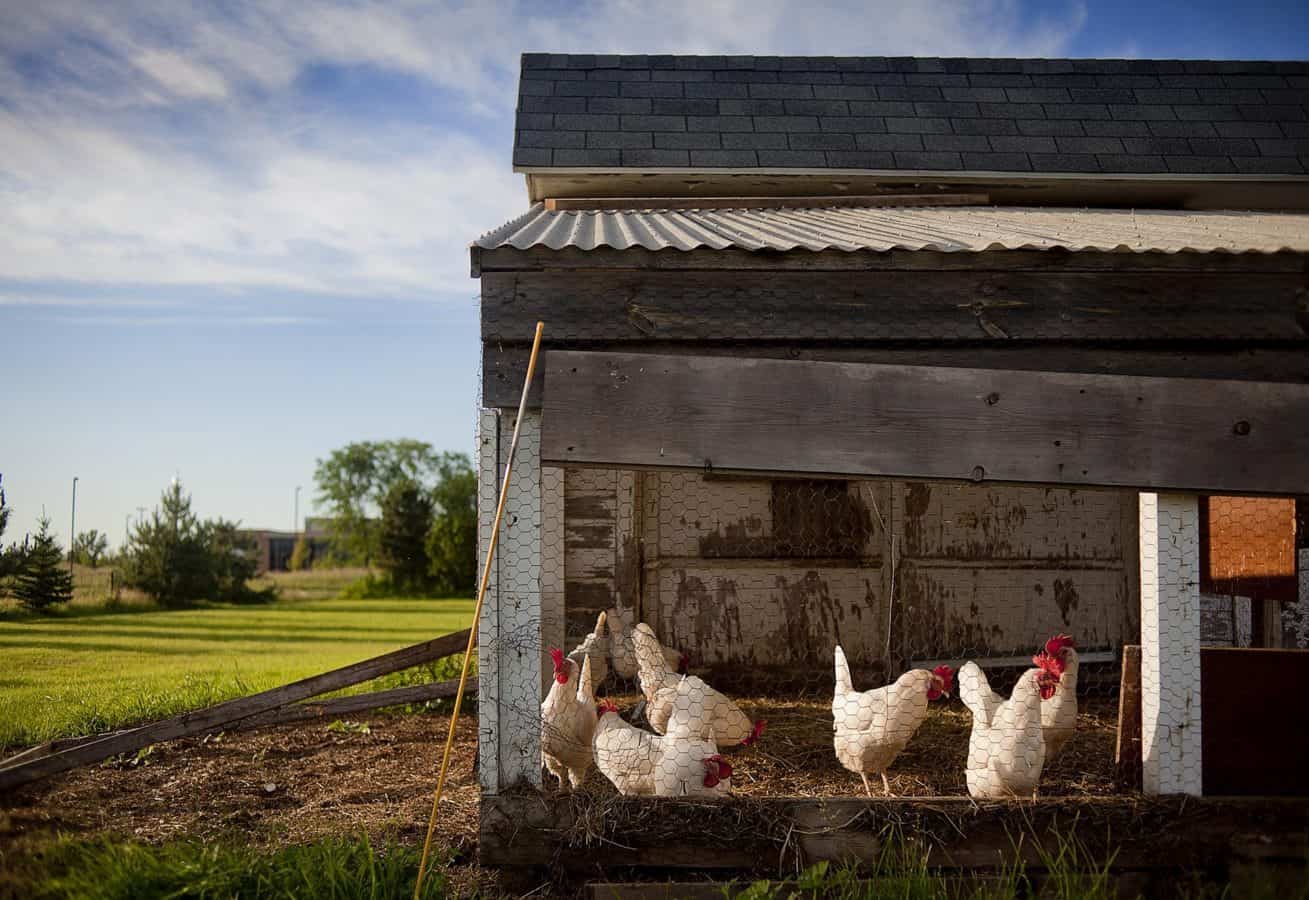Springtime is a favorite here on the homestead, as plants, bugs and animals all start to wake from their long winter slumber, but it is also of time that requires a lot of hard work. As the winter months start coming to an end, and the sunrise starts coming earlier each morning, it is time to gear up for the warmer months of spring and start making preparations for your flock to transition towards summer. The most important things to do to prepare your backyard chicken coop and flock during the spring involve:
- Uncovering the coop for better airflow
- Cleaning out and repairing the coop
- Inspect your flock
- Feed transition
- Water changes
- Light adjustment
- Guarding/protecting against would be predators
- Guarding against parasites
- Preparing for or making precautions against new additions (broody hens and hidden nests)
- Protecting your plants, garden and yard from hungry chickens
- Watch for flooding, and be ready for a cold snap
1. Uncovering the coop for better airflow
If you winterized your coop for colder temperatures, you took measures to keep your coop dry and draft free during the winter. Now that warmer temperatures are on the way, it is time to unbutton those hatches to allow for good ventilation, and cross air flow. Because the temperature will rise slowly, you will want a system that allows for warmer temperatures gradually. Chickens are susceptible to frostbite, so don’t do this too early or too quickly. If you insulated your coop, it is time to remove the excess insulation. We use a mixture of wooden flaps and plastic coating to prevent drafts during the winter, and as temperatures warm up, we remove the wooden planks from the exterior of the coop one side at a time, and depending on the night time temperature, will roll the plastic coating up partially, to allow for fresh air to enter the coop. This helps the chickens transition into summer gradually, and also helps with their adjustment to the light changes of the season as well. Ideally, (and depending on the size of your flock), during early spring you will want your coop to maintain a nighttime temperature of 30-40 degrees. If you keep a thermometer in your coop you will notice that the chickens do a good job of generating their own heat as they roost. The average resting temperature of a hen is between 105-109 degrees Fahrenheit. During colder temperatures, chickens trap air between their feathers which insulates them and keeps them warm. Some chickens will even tuck their heads beneath their wings while sleeping for added warmth. The most important thing to remember during the spring is to keep the coop dry and ventilated.
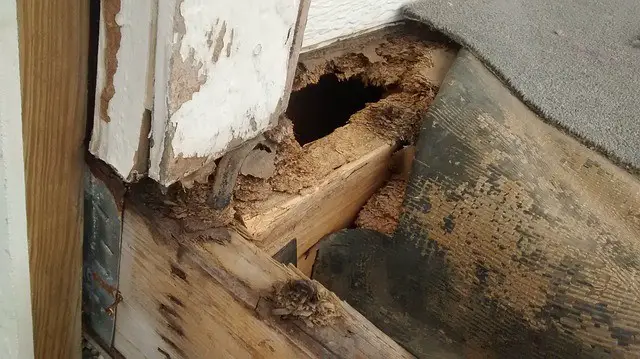
2. Cleaning out and repairing the Coop
Spring is a great time to inspect your coop and make repairs if necessary. Remember that your coop is the best line of defense you have to protect your flock against predators and the often unpredictable elements. Winter ice and snow can cause wood to freeze or expand, nails and screws to rust, and wood to rot. We always use early spring as a time to check and patch the roof, reinforce ventilation latches, take a closer look at roosting posts, and even the nesting boxes to make sure everything is in good shape. Any holes to the roof or coop will need to be patched or closed, as predators become more active during springtime months as well.
We also use this as an ideal time to shovel out and remove all of the droppings that have accumulated during the winter months under the roosting posts. If you have a garden, you can read about the benefits of using your chickens’ droppings for fertilizer here. It is a dirty job, but absolutely imperative to keep down the ammonia levels from droppings and the possibility of infections or illnesses from spreading. Springtime is when many chickens experience respiratory illnesses due to the combination rising temperatures, wet conditions, and the closed quarters they have endured during the winter months. (You can read about common respiratory and other illnesses of backyard flocks here).
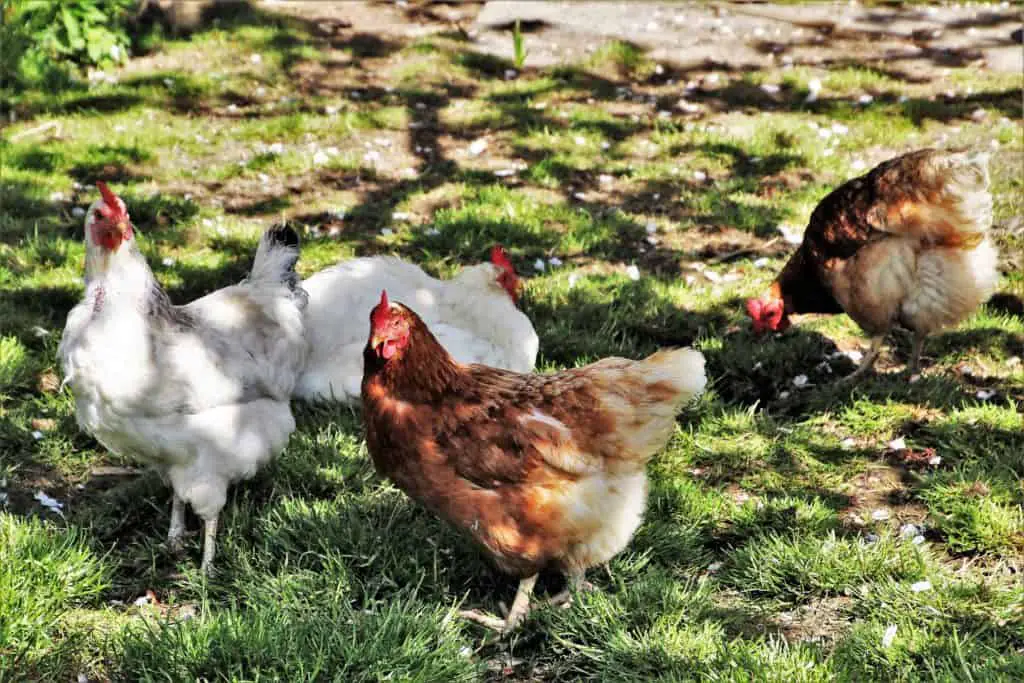
3. Inspect your flock
Spring is also a great time to give each of your backyard pals a good once over to ensure they are healthy. I like to check our chickens’ feet for infections including bumblefoot, swelling or lacerations, as well as their feather shafts and vent areas for scabs which may be a sign of mites. It is also a good time to check for eye crust or nasal drip which may be a sign of respiratory infection. If your chickens display any of these signs they will likely need to be separated from the flock and treated. (Read here regarding common chicken illnesses and treatment).
4. Feed transition
During wintertime, a chickens dietary requirements change due to molting, decreased egg production, and enduring cold temperatures. Winter is a time for most chickens to repair and recuperate from the stressful heavy egg-laying months of summer. Most backyard coop owners adjust to these winter needs by feeding their chickens more carbohydrates, as opposed to protein, and increasing the amount by as by much as 50%. Hens eat more during the winter months in order to stay warm. A lot of farmers will feed their chickens an extra helping of cracked corn prior to bedtime to help them stay warm at night as well.
As spring approaches, you will be able to transition back to a heavier protein and lower carbohydrate mix. This is also a great time to allow the chickens to graze your lawn and garden patch before it is prepped. They will find all kind of tender chutes, seeds and bugs in the newly thawed ground. Additionally, you can scale back the amount you are feeding your flock, as they will no longer be needing the large amount of carbohydrates to stay warm, and they will also have more light during the day to keep them outside foraging on their own.
5. Water changes
During the winter, you most likely used some form of heated source to keep water from freezing, and to keep your flock well hydrated during colder temperatures, especially because a chicken’s water intake increases by 50% during winter months. As the temperature outside of the chicken coop increases, so will the temperature inside of the coop, and you will need to remove any heated water source you have utilized to keep water from freezing. This is important, as chickens do not enjoy drinking warm water. Warm water is also a fertile breeding ground for bacteria and algae. Make sure that your chickens have 24 hour access to water, and ensure that the water is clean and fresh. Because springtime is notoriously rainy and muddy, this may require changing the water two to three times per day. Changing the water regularly is also simply the best practice year round to avoid bacteria, algae, and parasites.
6. Light adjustment
As the number of hours of daylight per day approaches 14 hours during the spring, your flock will naturally begin laying more eggs, gradually increasing their egg production as the day length increases. If you have added artificial light for your flock during the winter months to increase winter egg production, you will want to gradually decrease this light so as to correlate with the natural increase of light daily. It is suggested that artificial light is best used in the mornings, as a sudden loss of light at night (as opposed to the gradual decrease that accompanies sunset) may lead to panic and suffocation if chickens pile together from fright. So, as spring approaches, use less and less artificial light each morning, until your flock is using only natural light.

7. Guarding/protecting against would be predators and parasites
Spring is a very busy time for predators such as skunks, fox, hawks, and weasels who are vigorously looking for ways to feed their own new or growing families. It is also a time when other predators will be keenly aware that egg production in your coop is increasing. Thus it is critical that your inspect your coop in early spring to make certain it is predator proof. This will include predators who may dig or climb, squeeze through tight spaces, or even unlatch easy to open doors (think raccoons). Put yourself in the mindset of the predator, imagine how they may attempt to access your flock, and thwart those attempts by adding additional chicken wire, patching holes, or adding better security.
To guard your flock from airborne predators such as hawks as they begin spending more time outside, you should provide shelter they may hide under. If a hawk is sighted in the sky, your flock will need to take cover quickly under bushes, shrubs, trees, or even fences. Be mindful of this as your set up your bird habitat. It is also helpful to maintain at least one rooster with your flock, as he will often keep his eye to sky and sound a warning to his flock if he senses danger. On our farm, we also utilize a guinea hen for this reason. (Though she is quite a force to be reckoned with, and ought to be the subject of her own blog post). Like a rooster, she will sound a loud almost tropical bird sounding alarm that will warn the flock if she sees danger.
Incredibly, you may also want to think about using a lock at night, to protect your coop from over-curious neighbors.
8. Guarding against parasites
Other pests you will want to guard against during springtime are mites and lice. As your clean and repair your coop and inspect your flock, it is the perfect time to check for and guard against vermin such as lice and mites that can become bothersome and even life-threatening for your flock, (and especially new chicks). Mites can become especially rampant in nesting boxes and coops, so if you notice your flock doing extra preening, or showing hesitancy to enter their coop or nesting boxes, you may have a mite infestation.
As the temperature warms, it also brings these unwanted pests. Because mites and lice are often brought by wild birds or rodents, be sure during spring not to leave grain outside of the coop, or in places that will attract wild birds or rodents. Additionally, provide a place where your chickens can take dust baths. Typically, a good dust bath a day will keep the mites away, unfortunately, because spring is notoriously wet, your flock may not have access to a natural source for a dust bath. There are many DIY methods for creating a dust bath for your chickens during the winter and spring, and we highly recommend these. On our homestead, we use a simple plastic bin with several gallons of fine sand and a bit of wood ash and keep it clean and available from October through May. Some people like to add a small amount of diatomaceous earth to their homemade dust bath, but because we also raise bees, we purposely limit our usage of diatomaceous earth.
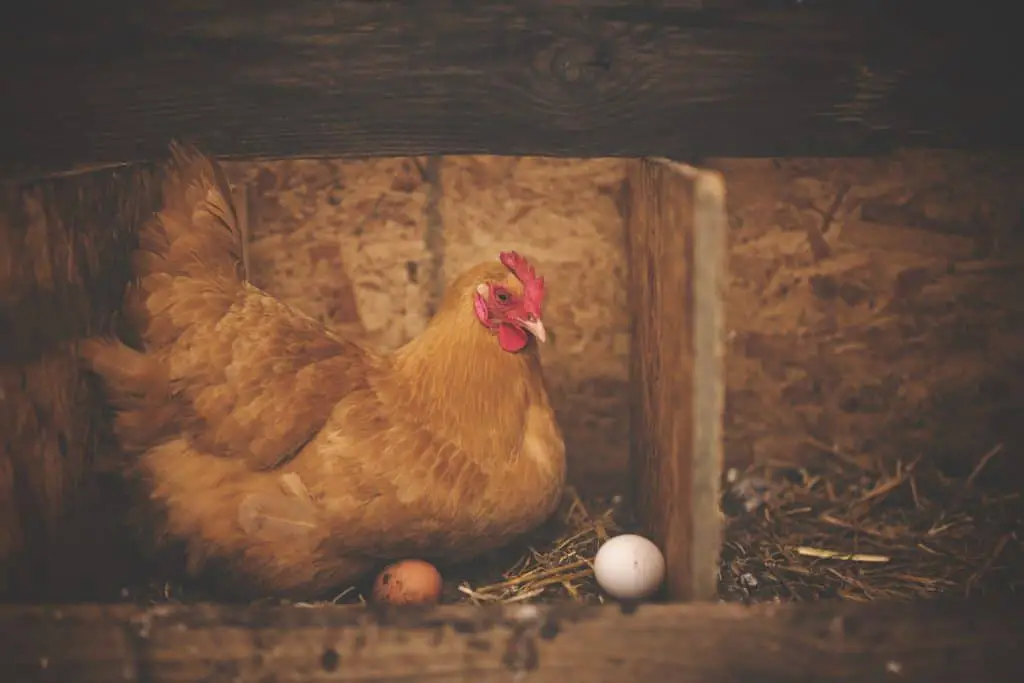
9. Preparing for (or making precautions against) new additions (broody hens and hidden nests).
Because of the increase of natural light, Spring is the ideal time for your hens to turn their thinking towards brooding their own little flock. (It is healthy for new chicks to mature when there is as much light as possible). Enter the broody hen…. If you are looking to increase your flock, then there is no problem with a broody hen, or the addition of some hatchlings. If you are not wanting your brood to propagate, you will need to take precautions.
If you do want to raise a new crop of chicks, then simply get out your brooding pen, and prepare it for a new batch. You may choose to incubate the eggs yourself, or allow your broody hen to do the work. There are many articles out there to help with raising new chicks, so we won’t address that in this article.
If however, you don’t wish to hatch out a new brood, you will likely need to “break” the broody hen. Personally, we do this by gathering the eggs twice a day, and as gently as possible. Though she’ll put up a fuss, and even peck at you, you’ll need to remove the eggs from underneath her regularly, to keep her from hoarding more eggs. You simply have to be more determined than she is. If your broody hen is particularly upset, it may become necessary to use an isolation crate or wire box to keep her from returning to the nesting box. You will want to be careful as your isolate a broody chicken as it can be quite stressful for them.
If your have free range or pastured chickens, you will need to keep a close eye out for hidden nests on your property, as well as keep an accurate head count of your hens at night. A missing hen or two is a sure sign that one is hiding a nest and trying to hatch her own brood in a hidden location. Personally, we enjoy the hunt when we know our hens are hiding a stash of eggs somewhere in the yard, It’s kind of like an early Easter egg hunt. We have found nests in the herb garden, under the bushes on the side of our home, and even in the grass between the teeth of the manure spreader. Those hens can be sneaky when it comes to hiding their eggs.
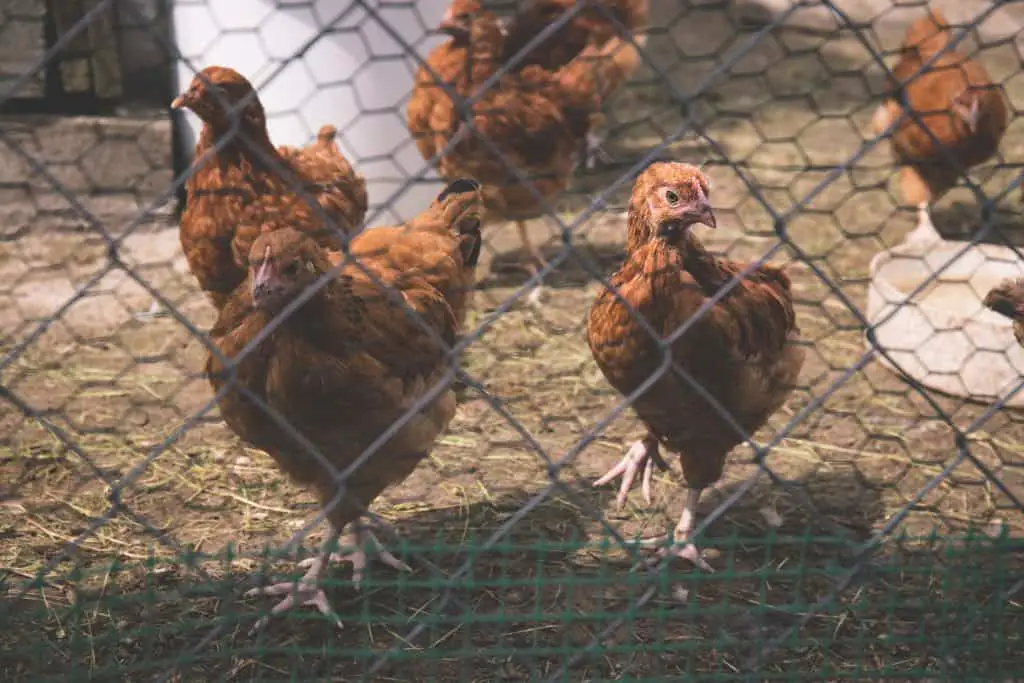
10. Protecting your plants, garden and yard from hungry chickens
Depending on when you start planting, and how you habitat your chickens, you may need to take precautions to protect your plants and garden from hungry chickens. At our homestead, we allow our chickens to pasture, which means they have free reign to peck and scratch at anything we haven’t fenced off or protected. Because we are also farmers and gardeners, this requires us to protect our crops with fencing. There are numerous methods that can be used for garden and plant protection, including low-voltage electric garden fences, panel fences, or even structures or greenhouses. Personally we use movable panel garden fencing and green steel farm fence T posts. This allows us to open and close off different areas, or to remove the fencing completely as the seasons change. We highly recommend this method, as simply removing a few panels of fencing in the late summer of fall allows the chickens access to areas of the garden we are no longer harvesting. They absolutely relish the opportunity to forage through the remaining plants and dirt for treasures.
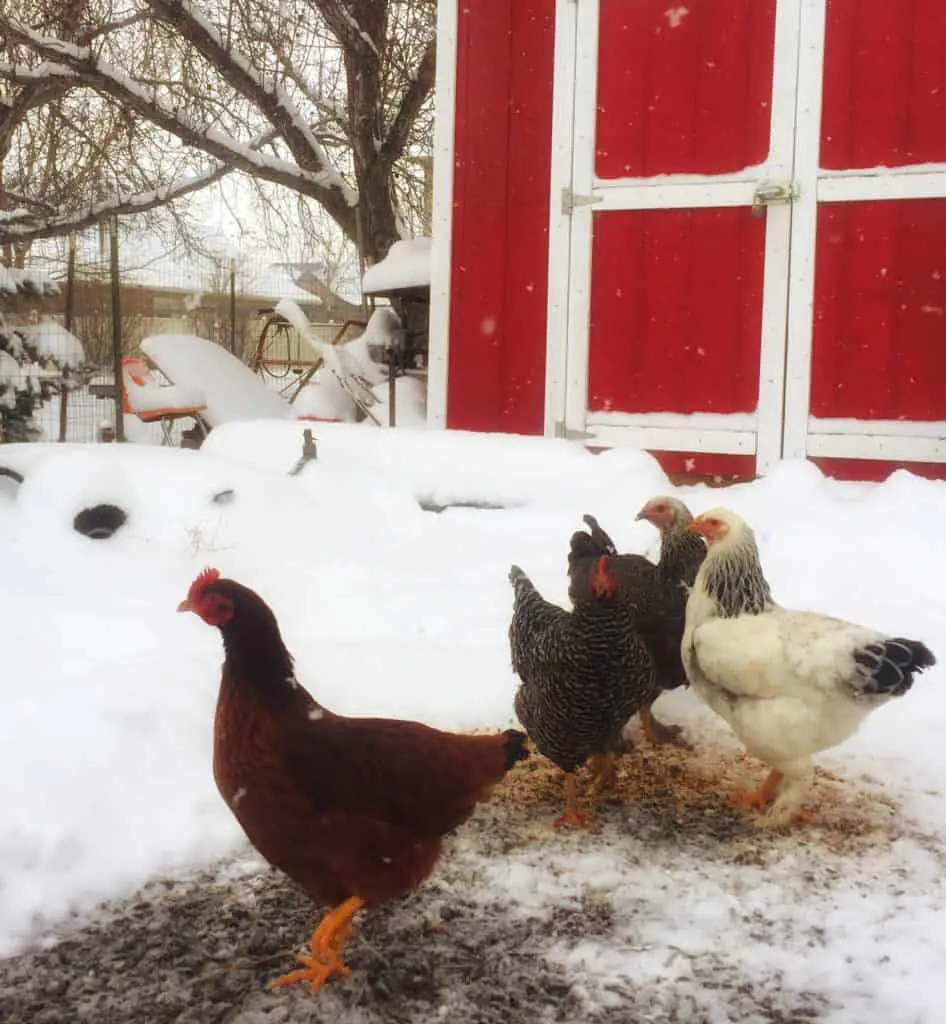
11. Watch for flooding, and be ready for a cold snap
Spring is notoriously wet in many areas of the world, and can throw in an occasional unexpected freezing or cold snap, so you will want to keep a close eye on the weather, and guard your coop from excess moisture, flooding, or freezing. We do this by using a waterproof roof, and repairing it first thing in January or February, as soon as we tend to see warmer days. Additionally, we surround our coop with straw bales, which protects our flock from excess water that may run or accumulate during heavy rains.
Additionally, should the weather turn back to frigid temperatures, we keep our electric water warming bowls readily accessible until May, in case we need to keep water from freezing during a cold snap, and we keep our plastic wall coverings attached (but rolled up) through May as well in case they need to be lowered to protect from drafts.
These simple measures have saved us a great deal of worry and time when it comes to protecting our flock in the event of an unexpected but common cold snap.
That’s All Folks
As you raise your own flock, you will find many tricks of your own to utilize on your own property, and in your own climate. Each backyard flock will have their own needs and you are the best person to determine what works and what doesn’t on your own property. These are just a few tips that we have found that have helped us as we transition our flock each spring. You may also enjoy researching additional topics such as: preparing my chicken coop for winter; how to increase egg production during winter, best uses for artificial light with chickens, and how to break broody hens.

